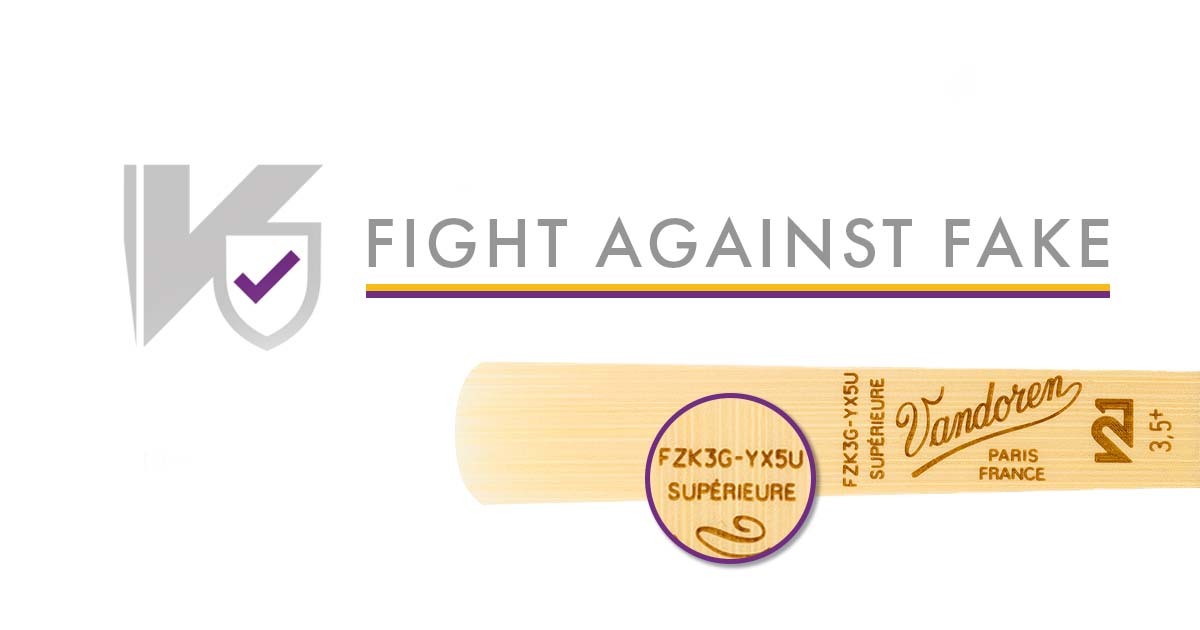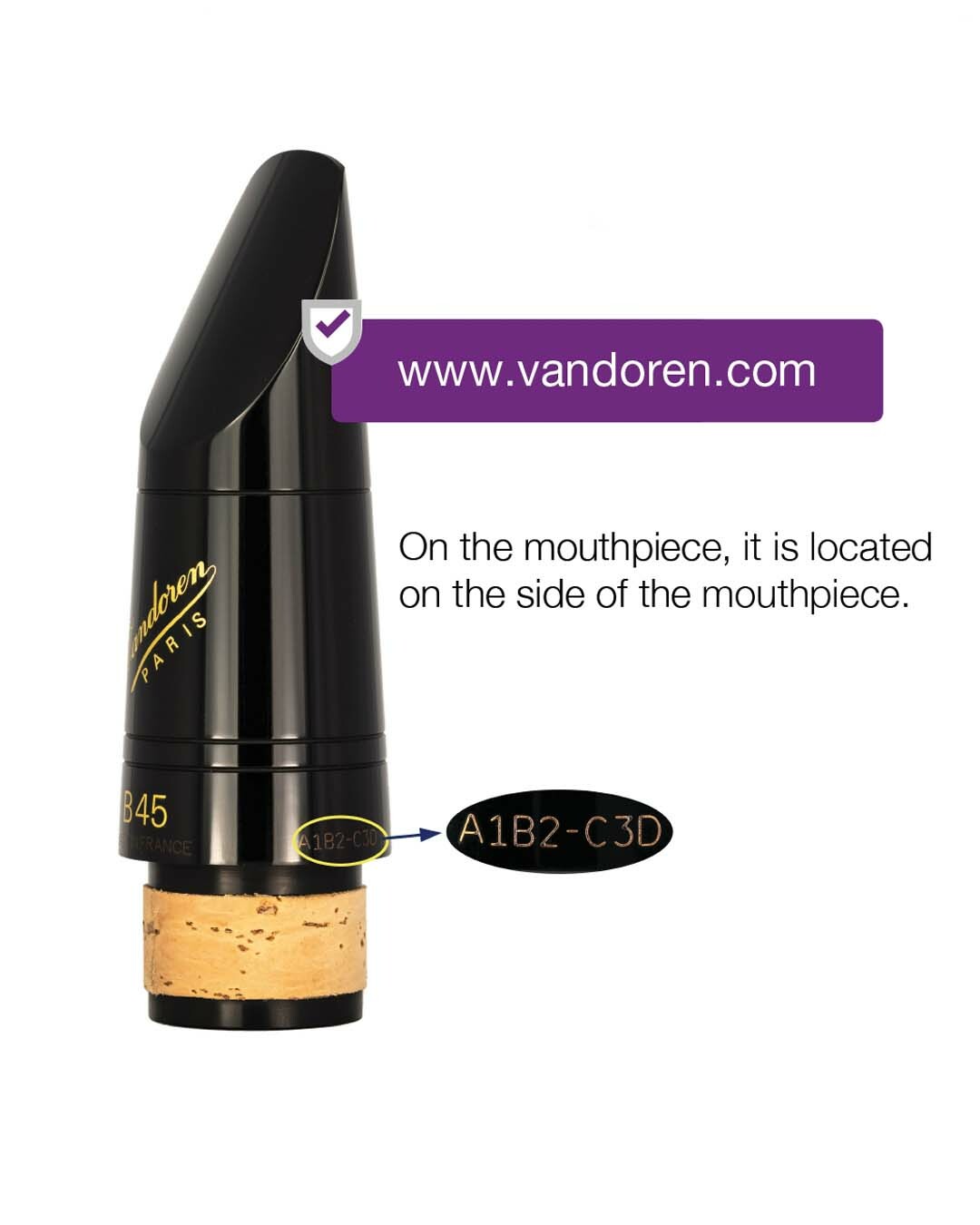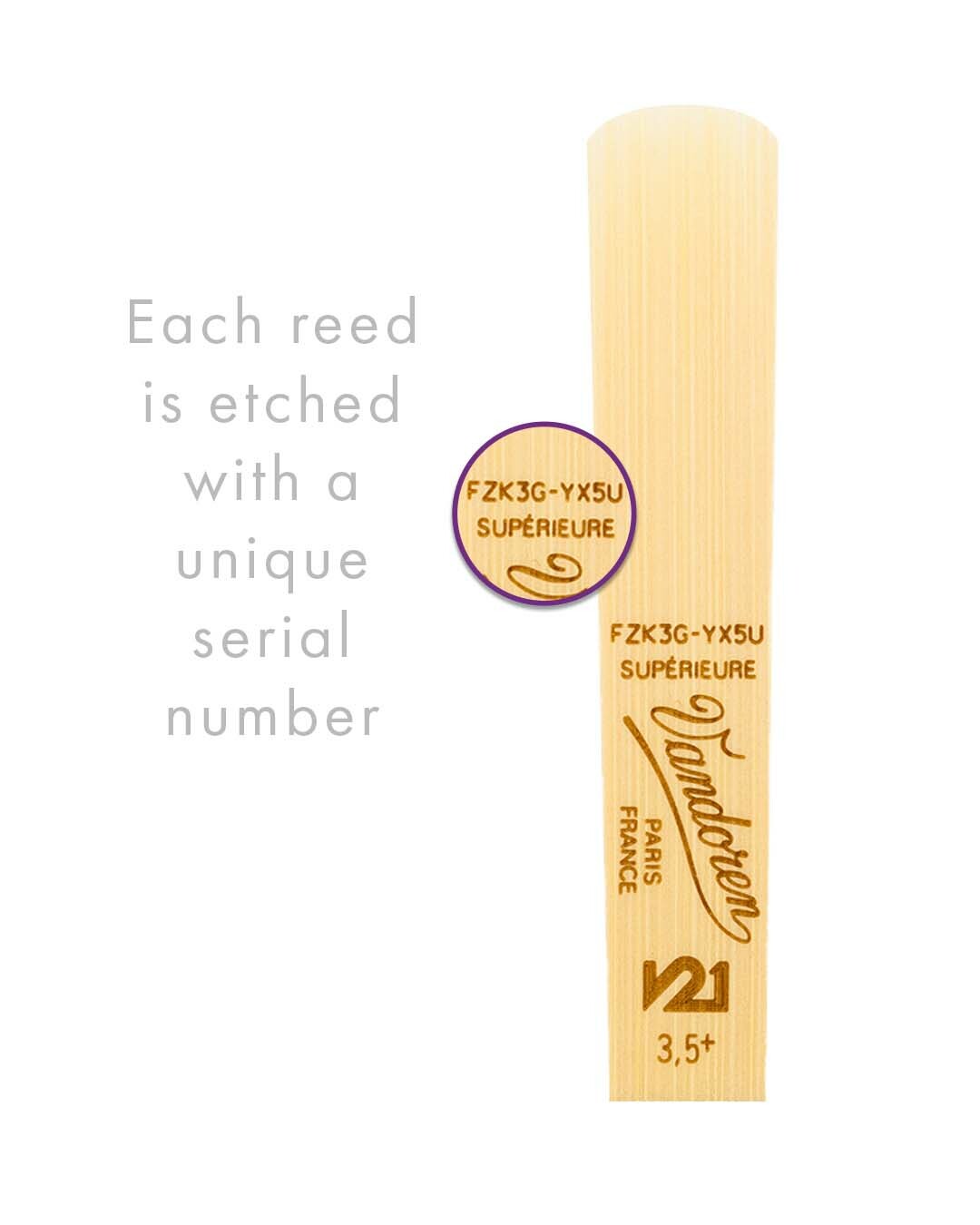How to Spot a Fake Vandoren Mouthpiece and Reeds
by Michael Skinner
Date Posted: September 29, 2021

With the advent of technology, there has been an explosion of counterfeit products that have flooded the market. From designer handbags to high-end golf clubs, nothing – including Vandoren reeds and mouthpieces – is off limits when it comes to counterfeiters.
Vandoren has been diligent in fighting these attempts to take advantage of one the most respected brands in the music industry.
The Vandoren Fight Against Fake project is designed to help you spot counterfeit reeds.
Vandoren has gone to the expense of etching a unique authentication number on each reed and are systematically adding them to their mouthpieces. To find out if your reed, or in some cases, your mouthpiece is in fact authentic, just go to www.vandoren.fr/fightagainstfake and follow the instructions to enter your serial number. It will tell you whether or not your reed is indeed authentic Vandoren. In almost every instance, if you purchased your reeds from a reliable source, you will find that your reeds are real.
Clarinet and saxophone mouthpieces are also being copied in surprising numbers. Since Vandoren makes some of the best mouthpieces and reeds in the world, it’s no surprise that counterfeiters are attempting to copy these remarkable products.
Here are things to look out for when purchasing authentic Vandoren products:
1. Price...If it's an amazing price, it may not be an amazing deal.
If the cost is just too good to be true, it’s probably a fake. When you see a mouthpiece or reeds online for sale, before you buy, compare that price at one or two other sites. If the price you’re quoted is substantially less than the other two sites, it’s highly likely that the incredible deal is on counterfeit products.
2. Additional names added to the Vandoren name - illegal and ill-advised
Find out what the actual title of the mouthpiece in which you are interested. You can find this at the Vandoren website (www.vandoren.com).
If you see any name attached after or before the actual name of the mouthpiece, it’s likely you’re looking at an imposter. This is dead giveaway that it is a modification or a copy of the original. Actually, it’s just using a different name to disguise the truth…it’s not a real Vandoren mouthpiece.

In 2020, Vandoren began etching authentication codes on select mouthpiece models.
3. Consider the source.
There are sites out there that are notorious for selling counterfeit goods. Do your homework.
You’ll find many times that these sites offer products priced significantly under the price of a real product. In my opinion, the best sites are sites where you can also get real, technical advice on the product in which you are interested.
If you're looking at special equipment like musical instruments, or golf clubs, wouldn’t it make sense to go to places that specialize in those products? It’s something you should consider as you choose the site where you want to do business.

4. Ask around.
You probably have a private teacher or band director who can help you wade through the minefield of real versus fake. Seek out advice from someone you trust and show them what you’ve found. Second opinions can save you a lot of headaches.
5. Ok, I bought reeds and yep, they were fake. What now?
If you have a box of reeds that were shipped to you, contact the retailer, and inform them that you are returning them because they are counterfeit. Most reputable retailers will exchange them and then research your claim to either close that site or confirm its authenticity regarding Vandoren products.
If you consider these guidelines before you make your purchase, you’ll find your perfect Vandoren mouthpiece or reed and spend your time practicing and performing – that’s a deal you can’t resist.
Happy hunting!